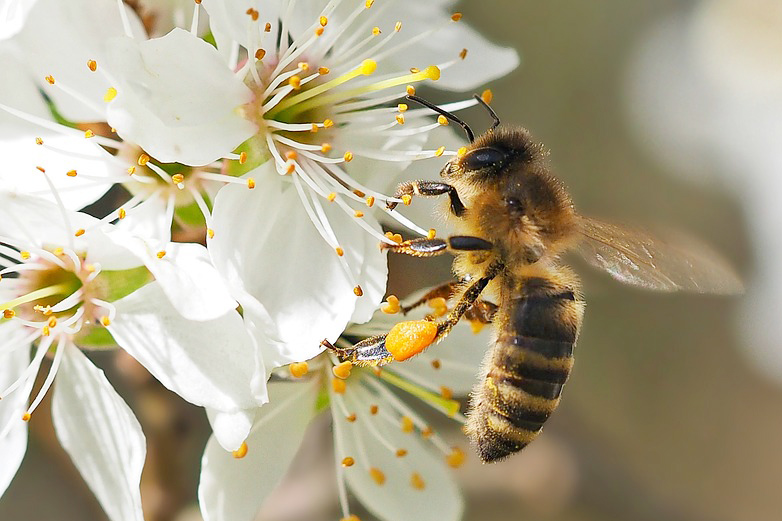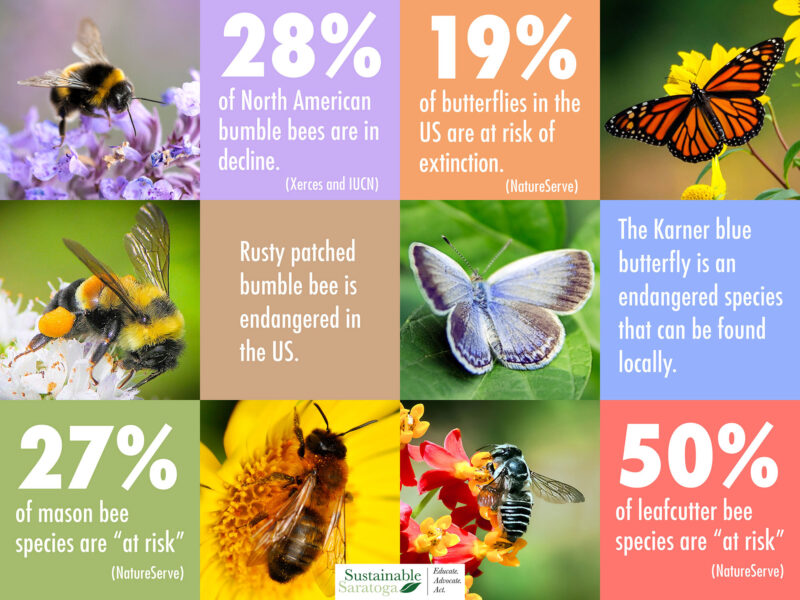A new modeling study in Environmental Health Perspectives reveals that half a million people are currently dying prematurely every year due to global insect pollinator decline.
Three-quarters of all crops, including cash crops like coffee, spices, etc., require pollination. However, the population of pollinators is increasingly in peril.
The study published in the journal assesses a variety of pollination-dependent crops using the data from the work published in Science in 2016.
The study tracked 344 fields from 33 pollinator-dependent crop systems in both small and large farms in the third-world regions and postulated that nearly a quarter of the agricultural production yield gap (the disparity between average farms and the farms bringing in the most) is likely to be related to the decline of pollinators and insufficient pollination.
The researchers said: “We estimated that the world is currently losing 4.7 percent of the total production of fruits, 3.2 percent of vegetables, and 4.7 percent of nuts.”
Why are pollinators an integral part of agricultural production?
Pollination is an activity invisible to the naked eye but yields huge returns to agricultural production.
According to the Food and Agriculture Organization (FAO) of the United Nations, the tiny insects responsible for pollination affect 35 percent of global agricultural land, ‘supporting the production of 87 of the leading food crops worldwide.’
Animal pollinators are far more impeccable at delivering pollen than wide or self-pollination, thereby increasing successful fertilization, improving fruit sets, and resulting in greater yields.
In addition, these pollinators enhance genetic diversity among various plants through cross-pollination and limit inbreeding.
Apart from agricultural production, they play a pivotal role in the regulation of ecosystem services in nature.
Their eminence at this juncture can be understood through the metaphor of the ‘butterfly effect’ of the Chaos Theory, a butterfly flapping its wings in Brazil, causing a typhoon in some other region of the world.
Wherein a single act cannot possibly have non-linear impacts on a complex system, it nevertheless serves as the catalyst and acts on the starting conditions.
An entomologist at the University of New England in Australia, Manu Saunders, who was not a part of the study, stated: “That many ways that declining biodiversity impacts human health and food availability is an important area of knowledge that often gets overlooked in coverage of biodiversity decline.”
Pollinators are under threat:
Globally pollinators are vanishing, majorly because of the loss of habitat. Pervasive land use fractures and degrades appropriate habitats for insect pollinators.
According to the FAO, the extinction rate for bees and other insect pollinators is 100–1000 times higher than normal due to human impact.
Altering land structures, intensive agricultural practices, and use of pesticides has led to heavy losses, causing fragmentation and degradation of their natural habitat.
Furthermore, climate change is adding to the odds in the current situation. Rising temperatures and an increasing probability of floods and droughts hinder pollination and flowering time.
What’s next: Looming hunger threat?
The decline in the population of pollinator insects like bees, butterflies, etc., has raised concerns over the future food security and stability of our food systems at large.
Despite most staple crops—cereals like maize and rice and legumes like peas and lentils—not relying on insect pollination, the global decline of pollinators is worrisome in terms of agricultural yields.
The escalating tussle between a growing population, the emerging necessity to produce more pollinated foods, and the urgent need to protect pollinators. The UN projections postulate a possible rise in the global human population: 8.5 billion by 2030 and 9.7 billion by 2050.
We indeed grow different amounts of crops. Demand for white and rice is far greater than that for strawberries, yet demand for pollinated foods could grow as diets diversify globally.
Yield gaps, to which the study is referring, are set to affect not only food security but also the income of farmers. As many cash crops, like soybeans, cocoa, coffee, palm oil, etc., are dependent on pollinators, they are among the cash crops that many low-income countries rely on for their trade.
At this juncture, balancing biodiversity on and off the farm becomes important, as they play an essential role in paving the way to feed the growing population in a sustainable way—meeting the aim to create a world free from hunger by 2030.
In addition, maintaining biodiversity and a vibrant ecosystem is fundamental to the very idea of restoring, protecting and promoting ‘the life on land’.



